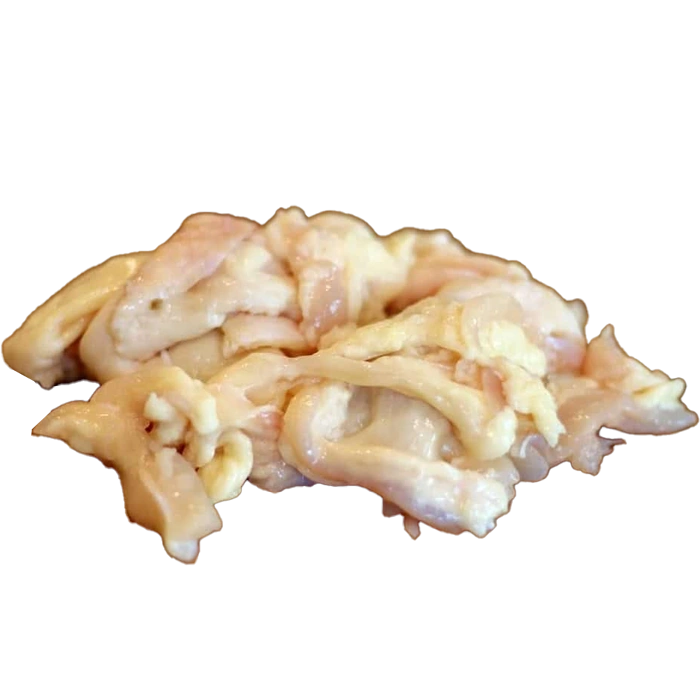Nutritional properties of Chicken Fat
Energy :
900.00 Kcal / 100g
Category : Oils and Fats
Group : Animal Fats & Oils
Composition And Nutritional Value :
Chicken fat, also known as schmaltz in some cuisines, is a natural fat derived from chickens. It has a different composition compared to other animal fats, with a balance of saturated, monounsaturated, and polyunsaturated fats. Key components include:
Monounsaturated fats: Chicken fat contains a high level of oleic acid, a type of monounsaturated fat, which may support heart health when consumed in moderation.
Polyunsaturated fats: It includes some polyunsaturated fats like linoleic acid, though less stable at high temperatures, they are essential fatty acids for the body.
Saturated fats: Present in moderate amounts, which contribute to its semi-solid texture at room temperature.
Cholesterol: Like other animal fats, chicken fat contains cholesterol, which is necessary for hormone production and cell membrane structure.
Vitamins and minerals: Chicken fat contains small amounts of fat-soluble vitamins, particularly vitamin E, which acts as an antioxidant.
Health Benefits :
When used in moderation, chicken fat can offer some health benefits due to its unique fatty acid composition:
Rich source of energy: Chicken fat is calorie-dense, providing a stable source of energy.
Supports heart health: The presence of oleic acid, a monounsaturated fat, may help in maintaining healthy cholesterol levels and supporting cardiovascular health.
Source of essential fatty acids: Contains linoleic acid, which is important for skin health, brain function, and inflammation regulation.
Enhances nutrient absorption: The fat helps with the absorption of fat-soluble vitamins, such as A, D, E, and K.
Despite its benefits, there are some potential concerns with using chicken fat regularly:
High in cholesterol: Those with high cholesterol or cardiovascular conditions may need to limit intake of animal fats, including chicken fat.
Caloric density: Chicken fat is high in calories, so overconsumption may lead to weight gain.
Oxidation risk: The polyunsaturated fats in chicken fat can oxidize at high temperatures, leading to potentially harmful compounds, so it’s best not to use it for high-heat cooking.
Culinary Uses :
Chicken fat is widely used in cooking for its rich, savory flavor and versatility. It is especially popular in Jewish, Eastern European, and Asian cuisines. Common culinary uses include:
Frying and sautéing: Chicken fat can add a rich flavor to sautéed vegetables, potatoes, or meat dishes, especially when used over medium heat.
Flavoring: It is often used as a flavor enhancer in soups, gravies, and stews, adding depth to the dish.
Baking: Some recipes for savory pastries or breads, particularly traditional Jewish dishes like matzo ball soup or knishes, use chicken fat for its distinct taste.
Making schmaltz: In Jewish cuisine, rendered chicken fat (schmaltz) is used as a cooking fat and spread, sometimes seasoned with onions for added flavor.

